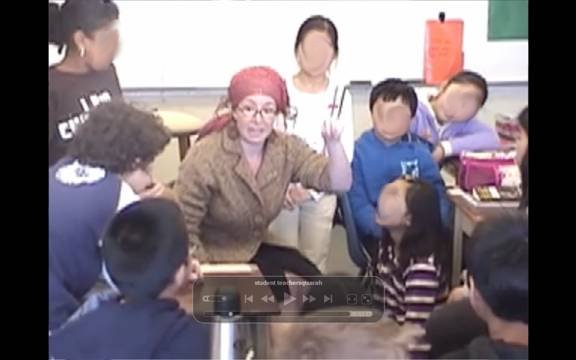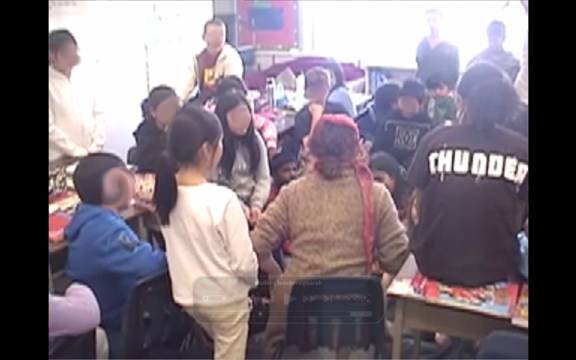ARTIFACTS: IMAGES OF ME IN ROLE and PROCESS DRAMA LESSON PLAN
**Please note that images of students have been blurred for identity security.

It is a joy to bring one’s passion into the classroom. As an arts educator, I discovered a way to thread my knowledge of drama education methods into an Language Arts lesson. I did this through a practice called “Process Drama.” In a process drama, the teacher assumes the position of “teacher-in-role.” Through a guided exercise, in character, the teacher helps the students assume active roles in their education by becoming actual characters within a story, setting scenes, and manoeuvring their way into a deeper understanding of the subject.*
We read Underground to Canada by Barbara Smucker.** After several chapters, the students had developed a strong enough knowledge base about the time period, slave plights, and storyline to dive deeper into the novel through a process drama. I entered the classroom in role as an elderly matriarch of a plantation (see photos in post) and challenged the students (who became the slaves) to convince me that they were equipped with the courage to make a plan to flee the plantation. By assuming the role of slaves, the students were able to empathize with the characters in the novel as they planned to run away. (Please click here to see lesson plan.)
Having had years of training in theatre, I had no trouble maintaining my character throughout the exercise. Where at first the students were quick to challenge my character (“If you’re really Gran-mammy, why are you wearing Ms. Wolfman’s earrings?”), the more they saw my seriousness, the more they understood the power of the assignment. Even the most doubting of students, when put to work making an escape plan which included finding a safe time of departure, what to bring, routes to take, backup plans, etc., they approached the task in earnest.

The grounds on which I taught extended beyond the performative aspect of this lesson. Having spent 4 years in a town that was a stop on the Underground Railroad and participated in several workshops educating children about the history of the railroad, I was happy to tap into that knowledge base. Living in a town whose breadth of history was in one sense so powerful and so concurrently tragic, I was compelled by a sense of duty to pass on the story of the slaves to others.
I was fortunate that this urgency worked well in my Grade 5/6 class. I knew that according to Piaget’s theory of cognitive development, they were at the stage in which they had the ability to “move beyond concrete experiences and begin to think abstractly to draw conclusions from the information available.”*** I felt comfortable sharing with my students the brutality of slave history in America because of their ability to think critically about the topic. Through the process drama, they used the tool of characterization* to draw conclusions and develop personal opinions about slavery, while experiencing for themselves the injustice of slavery in a safe environment.
Overall, the lesson was a success. If I were to teach this lesson again, I might alter it some to include more in-the-moment reflection. I realized the imagined reality of a slave did not translate well to the journal entries I asked them to write after the lesson had finished. The majority of my students explained the experience, but by stepping out of the role to write, that ability to relate to the characters in the book was somehow lost. And yet, I cannot blame them – when I removed Gran-mammy’s kerchief and glasses, I was once again a language arts teacher who happened to know a lot about the slave movement. I, with my students, lost that internal understanding of the material and the urgency to pass that information on. It is one thing for a teacher to have a broad knowledge base and strong understanding of a subject area. However, Gran-mammy might say, “On the othuh hand, y’all, it’s a fah mo-ah powerful thing to have that knowledge deep within yuh.” Before I revisit this lesson, I’ll have to contact Gran-mammy to see what she says about sharing that knowledge.

*O’Neill, C. (1995). Drama Worlds: A framework for process drama. Portsmouth, NH: Heinemann.
**Smucker, Barbara. (2000) Underground to Canada. Toronto, ON: Puffin Books.
***DeVries, R., Zan, B., Hildebrandt, C., Edmiaston, R. & Sales, C. (2002). Developing Constructivist Early Childhood Curriculum: Practical principles and activities. New York, NY: Teachers College Press.